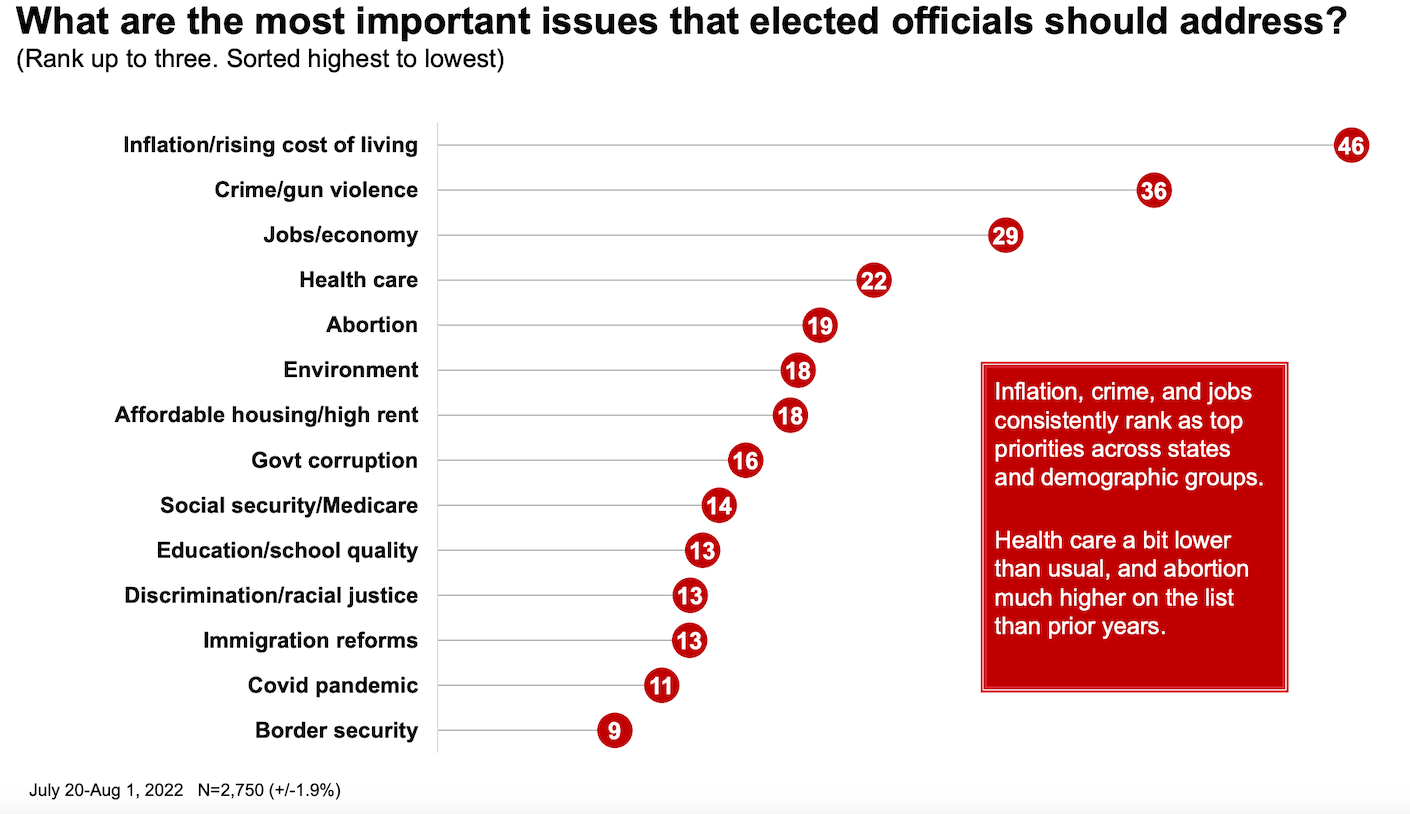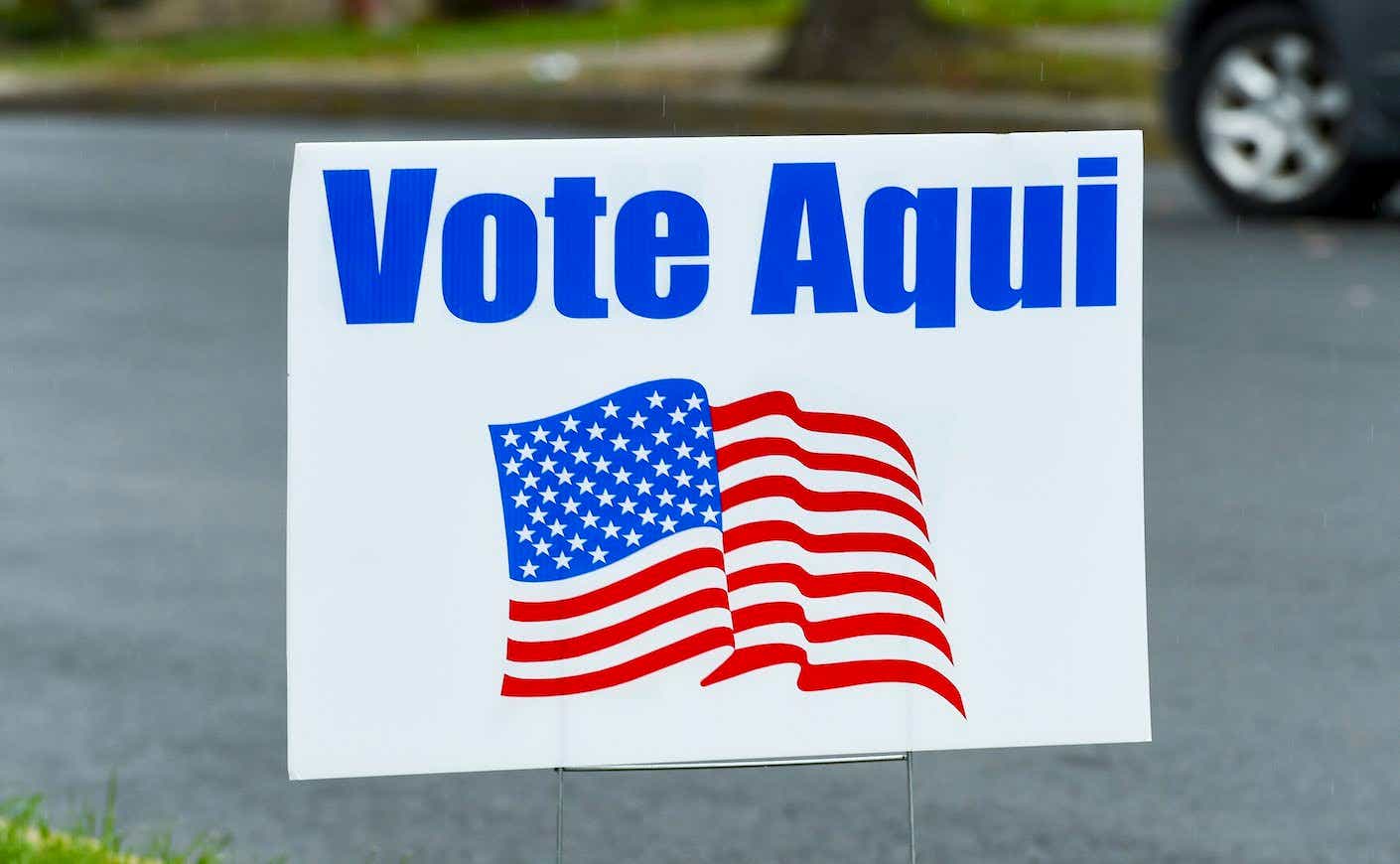In the 2020 election, the Latino voter shift toward the Republican Party became one of the most surprising and important political trends to follow.
Dating at least as far back as the 1980s, the majority of Latino voters pretty reliably supported the Democratic party. “Latino registered voters have long said the Democratic Party has more concern for Latinos or Hispanics than the Republican Party,” the Pew Research Center reported in October 2016. That’s beginning to change.
Latino affiliation with Democrats reached a high in 2012, but what goes up must come down, and it’s been dropping ever since.
The Wall Street Journal reported that in the 2020 presidential election, 3730 predominantly Latino census tracts (census boundaries set by the government that average 4000 residents each) shifted in favor of the Republicans. Meanwhile, only 352 tracts shifted to the left. These trends were pervasive, but not uniform — they occurred to varying degrees across the nation. Texas and Pennsylvania were among the states where the Latino voters shifted significantly towards the Republican party.
Now, as we close in on the midterm elections, data shows that the big shift in 2020 wasn’t just a one-time fluke; the trend is continuing and it’s ringing alarm bells for Democrats. The reason why that support is decreasing? It starts with neglect.
“The Democratic Party has long taken the Latino vote for granted, painting the entire community as ‘single issue voters’ who care solely about immigration,” Nelini Stamp, the director of strategy and partnerships at the Working Families Party tells KCM. The truth is that Latinos are an especially diverse group with a range of interests and priorities.
A recent poll by UnidosUS and Mi Familia proves this, finding that the top five issues for Latinos are wide-ranging, including inflation/rising cost of living, crime/gun violence, jobs/economy, health care, and abortion.

Those polled say they trust the Democrats to better address gun violence, health care, and abortion. However, they believe the Republicans will be better at making progress on inflation — the top issue — and the state of the economy.
Abortion made it onto the list for the first time, with 19 percent of the surveyed voters listing it in their top three priorities. In previous surveys, only two to three percent of voters considered abortion an important voting issue. This time, over 70 percent of those surveyed said the abortion procedure should be legal regardless of their personal beliefs. In an arena where abortion is deeply contested and politicized, this could be a deciding factor in how votes swing.
Meanwhile, perhaps you’ve noticed that immigration didn’t make it onto the list of issues. While only 13 percent of those polled identified immigration reform as one of their top three priorities, the idea of working toward a path to citizenship continues to receive very strong support.
Finally, the data reveals that Latino voters (or at least those polled) are currently unhappy with the state of affairs in the country, with 60 percent saying the country is on the wrong track. That highlights that Latino voters are now placing trust in Republicans to act on some of their highest priorities.
Why the Latino vote is important
The number of Latino voters in the United States has been rapidly increasing. In 2020, for the first time, Latino voters became the second largest voting group in the national election with 16.6 million votes. And an additional 1 million Latinos become eligible to vote each year. It doesn’t stop there — although voting among Latinos rose by 30 percent in 2020, as compared to the previous national election, 50 percent of the community still didn’t cast their ballot. Still, Latinos have a clear voting power — with numbers significant enough to swing elections in their favor.
Why the Latino vote is shifting
Stamp identified the following three reasons for the changing preferences:
- Treating Latinos as a monolith: Stamp says that Latinos have largely been seen as single-issue voters around immigration. “In reality, Latinos are impacted by everything that everybody's impacted by, such as the economy and public safety.” She continues, “The truth is that the top issues for Latino voters right now are the cost of living wages and jobs — the Republicans have narratives around inflation, jobs, and wages. So, the people are seeing one party really talk about their top issues and another party struggle with the issues of the economy.” She stresses that the Latino community is a diaspora made up of various backgrounds, countries, and experiences and can’t be clumsily put under one umbrella: “Immigration was a top issue amongst Latinos for a long time. But we're not a monolith. Even then, we weren't a monolith, and we're still not.”
- Level of investment: While the Democratic Party has long taken the Latino vote for granted, Republicans have done outreach in Latino communities — knocking on doors and investing in them over time. Republican candidates are taking the time to win these votes. Stamp has met Latinos in Texas who’ve told her that the Republicans are stopping at their doorsteps with campaign promises, telling them that the Green New Deal is going to take away jobs. “I believe that the Democratic Party has made attempts to invest in the broader Latino community. However, overall I've seen a real gap that needs to be filled — people's doors need to be knocked on, and not just the week of the election,” Stamp says. “You can't just come to Latinos at the last minute and ask for their votes. You need to be there in our communities all the time and organize us.”
- Failure to deliver on promises: Stamp believes that a lack of follow through on campaign promises has contributed to the voter shift. “I do think that immigration was a big issue for Latinos for a while,” she says. “And then when people got elected, we still did not have the immigration reform that we needed. Think about all of the working class people who voted for Obama and then swung to Trump. When the economy gets worse, when situations get worse, when the immigration system gets worse for folks, people are going to question why they voted a certain way.” “The multiracial working class still votes with Democrats, but the party can't take those votes for granted,” says Stamp. “They need to deliver for communities. So if Democrats pass a $15 minimum federal wage, maybe they would have more Latinos coming out to vote for them.”
What does this mean for midterm elections?
A recent report by the UCLA Latino Policy and Politics Institute shows that the swing voters (those who voted Democratic for Senate runs but Republican in the presidential race) in the Latino community will be especially important in influencing results in states like Arizona and Georgia, where the candidates are currently neck and neck. According to the report, swing voters make up between 2-10 percent of total Latino voters, depending on the state. As such, the institute’s director Rodrigo Dominguez-Villegas said Latino voters will “play a pivotal role” in the 2022 midterm elections and beyond.
Aaron Zitner of The Wall Street Journal highlighted that the two parties are trying to shape the issue landscape to target Latino voters. For instance, in the Rio Grande Valley in 2016, the focus was on immigration. However, in 2020, the campaigns were centered on the economy and COVID. Since the pandemic disrupted people’s ability to return to work, many turned to support the Republican viewpoint that workplaces should be kept open.
In a WSJ analysis, Zitner said, “This shift among Latino voters is one of the most important things that’s happened recently in American politics.” He continued, “If this shift is durable, it marks a big change for the political parties. If Latino voters are shifting away from the Democratic party and becoming a swing group, this means that one of the pillars of the Democratic coalition is getting a little shaky.” Said Zitner, “Republicans, on the other hand, they’ve become, in large part, the party of America’s white working class. But they want to be the party of the working class across all racial groups. This movement among Latino voters, if it continues, suggests that this is, in fact, happening. And the Republican party can become the party of America’s future by building across different races — a part of America’s working class.”
It’s still to be seen how the Latino vote — in the midterms and beyond — will impact the future of American politics. And if they’re wise, Dems and Republicans will certainly be keeping their eyes open.









